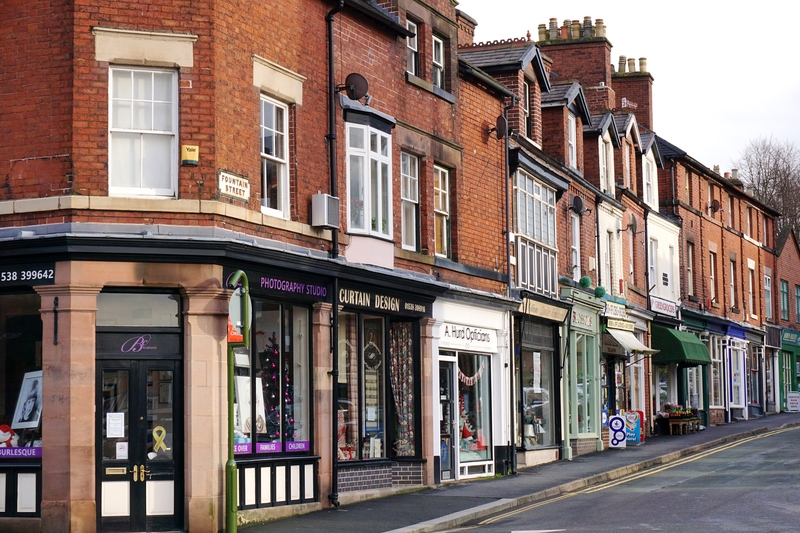
by Clare Bailey
For more than 15 years, I’ve been closely watching and engaging with the evolving dynamics of the high street—how consumer behaviours shift, how town centres adapt, and how retail spaces are reimagined to meet the needs of modern society.
Today, as a Fellow of the Institute of Place Management (IPM), I’m more convinced than ever that the future of our high streets hinges on a mix of careful urban planning, consumer insight, and adaptive reuse of retail space. The convergence of consumer confidence, behavioural shifts, and retail property is creating both significant challenges and unique opportunities.
In this article, I explore how these trends intersect, how communities are responding, and what practical steps can be taken to restore vitality to our town centres. We can’t afford to wait for the return of a pre-pandemic retail landscape, and instead, we must embrace a future that looks more innovative and flexible.
The Shifting Landscape of Consumer Confidence and Behaviour
Consumer confidence has been in flux for the past decade, driven by multiple factors including economic uncertainty, inflation, and the ongoing impacts of the pandemic. According to GfK’s Consumer Confidence Index, while we occasionally see a bounce in confidence, the underlying mood remains cautious. Consumers are no longer simply reacting to external events—they’re proactively shifting how and where they spend their money.
One of the most noticeable shifts is the change in spending priorities. As disposable incomes remain under pressure, many people are focusing on essentials while cutting back on discretionary spending. In fact, food and fuel costs have increasingly taken precedence, leading to a decline in spending on non-essential goods, according to recent data from the Office for National Statistics (ONS).
This is where we see a clear divergence: experience-based spending such as dining out, travel, and leisure activities remains strong, while traditional retail spending has softened. With consumers still wary of economic volatility, many have also become more price-sensitive, and as a result, trading down has become a prominent trend. Consumers are opting for value brands, discounts, or second-hand goods over premium products.
The Impact on Retail Footfall and Town Centre Dynamics
These consumer behaviour shifts are evident in the dynamics of retail footfall. According to BRC’s annual report, many UK high streets continue to experience sluggish foot traffic, while town centres in major cities have shown signs of recovery. However, the picture remains mixed: urban hubs are doing better, but small towns and secondary retail locations are struggling.
The pandemic-era trend of accelerated online shopping hasn’t abated. While some segments have seen a bounce-back in foot traffic as lockdown restrictions have eased, retailers in certain sectors are still struggling to balance online and offline sales. We see the growing importance of omnichannel strategies for many businesses as they attempt to reconcile these changes. Even more crucially, as more consumers work from home, commuting patterns have shifted, with fewer people visiting town centres during traditional peak hours.
Flexibility is now key. As high streets face the pressure of rising commercial rents, landlords are increasingly looking for solutions that flex to the changing demands of retailers and consumers. That’s why pop-up shops and short-term leasing arrangements have gained popularity as viable alternatives to long-term, permanent retail spaces.
Reimagining Retail Space: From Shopping to Multi-Use Developments
The growing trend of short-term pop-ups highlights a broader shift in how we view retail space. These pop-up concepts allow businesses to experiment, engage with customers, and establish physical presence without the high costs associated with traditional leases. Pop-up shops are not just about retail; they can become cultural hubs, offering a space for art, local makers, or even community events. This ability to adapt retail space to serve multiple purposes is becoming a cornerstone of high street regeneration.
A significant example of this is the Teenage Market initiative, which allows young people to showcase their entrepreneurial talents and sell their wares. Pop-up retail markets like these have shown the value of community-driven initiatives, offering a blend of creativity, sustainability, and local engagement. These markets also illustrate the importance of community collaboration in re-imagining the future of high streets.
Beyond retail, there’s increasing focus on transforming redundant retail properties into multi-use developments. Government planning reforms and changes to business rates are opening the door to the conversion of commercial spaces into residential units. As UK planning rules have been relaxed, there is growing potential to repurpose former retail spaces for housing, which can help bring residents back to town centres, making them more vibrant, safer, and economically viable.
Creating Vibrant, Mixed-Use Spaces: The Case for Housing and Community Collaboration
One of the most promising solutions to high street regeneration lies in bringing housing into town centres. Many high streets, particularly those with empty retail units, are finding that the conversion of former shops into homes can help revitalise the area. This approach offers a dual benefit: first, it brings residents back to the town centre, helping to re-establish footfall for remaining businesses; second, it provides an affordable housing option in often desirable locations. As reported by the Institute of Place Management (IPM), this approach is gaining traction across several local councils who are working towards sustainable urban regeneration.
I’ve had the privilege of chairing a voluntary town team in a regional market town, which was unfunded but successful in generating key ideas around improving the town centre through collaboration with local businesses, residents, and public bodies. The true power of these community-led regeneration efforts is clear: when businesses, local authorities, and the wider community come together to tackle high street challenges, real change is possible. Community collaboration is essential to ensure that any redevelopment meets the needs of both businesses and residents.
Looking to the Future: Innovation and Flexibility
The future of the high street is undoubtedly in innovation and flexibility. Landlords, retailers, and local councils will need to think beyond traditional models and embrace more fluid, multi-functional spaces. Retailers will continue to diversify their offerings, and community projects will play a key role in rethinking the purpose of high street spaces.
Flexible leasing agreements will also be crucial in adapting to these shifting dynamics. Some businesses will continue to require short-term space, while others may need hybrid models that combine both retail and digital sales. This flexibility will allow landlords to attract a wider range of tenants, from pop-up concepts to online retailers that seek physical presence without long-term commitment.
Key Takeaways: Practical Steps for High Street Regeneration
- Embrace pop-up and flexible leasing models to create short-term, low-risk opportunities for new retail concepts.
- Repurpose vacant retail spaces for multi-use developments, including housing, to attract new residents and revitalise town centres.
- Foster community collaboration—involve local businesses, residents, and public bodies to create inclusive, sustainable regeneration projects.
- Leverage data and technology to understand shifting consumer behaviours and align business strategies with new shopping habits.
- Encourage creative local initiatives such as Teenage Markets to engage young people and support local entrepreneurship.
About the Author
Clare Bailey, known as The Retail Champion, is one of the UK’s leading retail experts, with over 30 years of experience advising high street brands, global corporations, and independent retailers. A best-selling author, media commentator, and legal expert witness, Clare is renowned for her practical insights into consumer behaviour, sales strategy, and retail transformation. As a Director of the Institute of Sales Professionals, she champions excellence and innovation across the sector.


